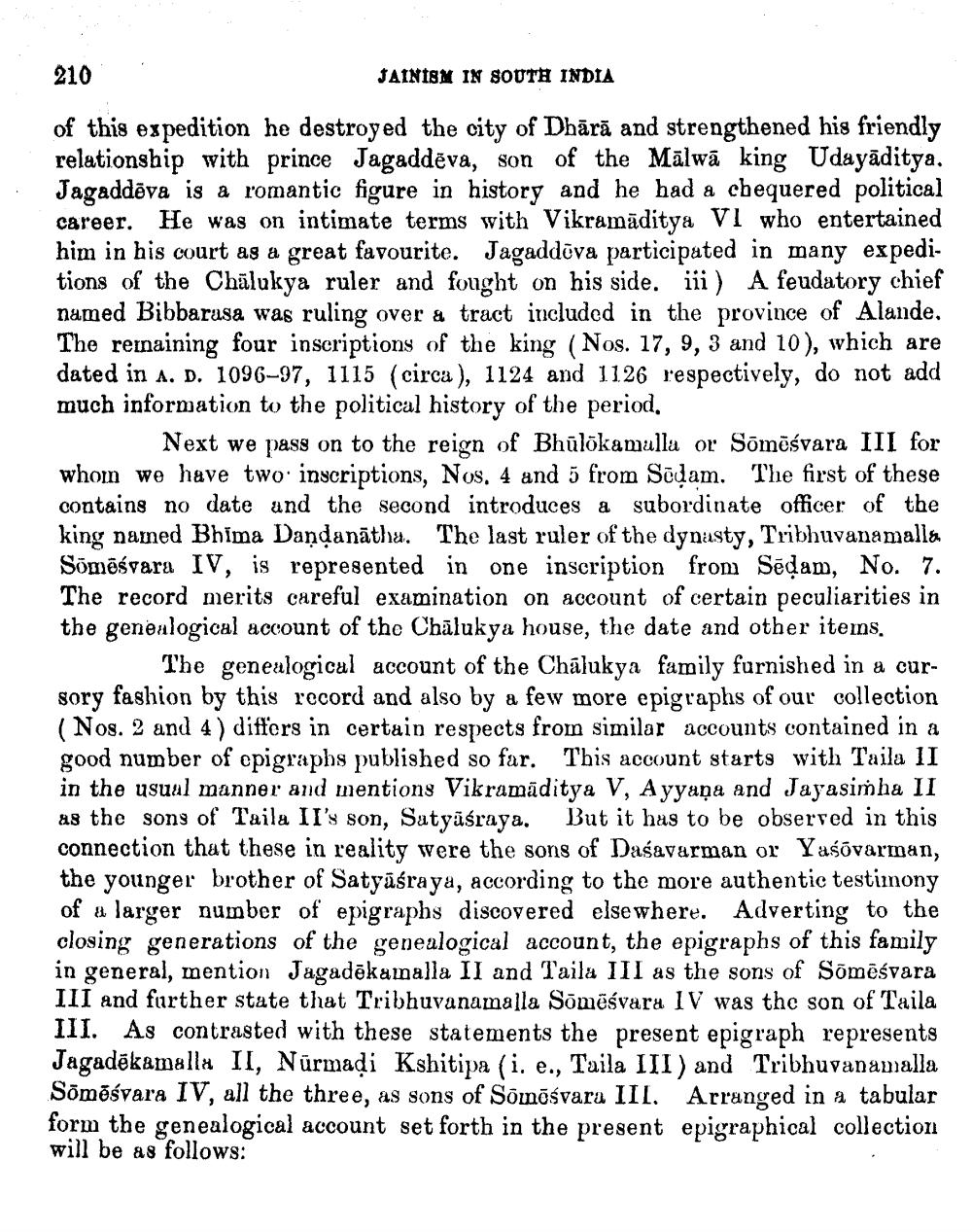________________
210
JAINISM IN SOUTH INDIA
of this expedition he destroyed the city of Dhārā and strengthened his friendly relationship with prince Jagaddēva, son of the Mālwā king Udayāditya. Jagaddēva is a romantic figure in history and he had a chequered political career. He was on intimate terms with Vikramāditya VI who entertained him in his court as a great favourite. Jagaddova participated in many expeditions of the Chālukya ruler and fought on his side. iii) A feudatory chief named Bibbarusa was ruling over a tract included in the province of Alande. The renaining four inscriptions of the king (Nos. 17, 9, 3 and 10), which are dated in A. D. 1096-97, 1115 (circa), 1124 and 1126 respectively, do not add much information to the political history of the period.
Next we pass on to the reign of Bhūlökamulla or Sõmāśvara III for whom we have two inscriptions, Nos. 4 and 5 from Sēdam. The first of these contains no date and the second introduces a subordinate king named Bhima Dandanātha. The last ruler of the dynasty, Tribhuvanamalla Sömāśvara IV, is represented in one inscription from Sēdam, No. 7. The record merits careful examination on account of certain peculiarities in the genealogical account of the Chālukya house, the date and other items.
The genealogical account of the Chālukya family furnished in a cursory fashion by this record and also by a few more epigraphs of our collection (Nos. 2 and 4 ) differs in certain respects from similar accounts contained in a good number of epigraphs published so far. This account starts with Taila II in the usual manner and mentions Vikramāditya V, Ayyana and Jayasimha II as the sons of Taila II's son, Satyaśraya. But it has to be observed in this connection that these in reality were the sons of Daśavarman or Yaśõvarman, the younger brother of Satyāśraya, according to the more authentic testimony of a larger number of epigraphs discovered elsewhere. Adverting to the closing generations of the genealogical account, the epigraphs of this family in general, mention Jagadēkamalla II and Taila III as the sons of Somēśvara III and further state that Tribhuvanamalla Sõmēśvara IV was the son of Taila III. As contrasted with these statements the present epigraph represents Jagadēkamalla II, Nūrmadi Kshitipa (i. e., Taila III) and Tribhuvanamalla Sõmāśvara IV, all the three, as sons of Sõnāśvara III. Arranged in a tabular form the genealogical account set forth in the present epigraphical collection will be as follows:




